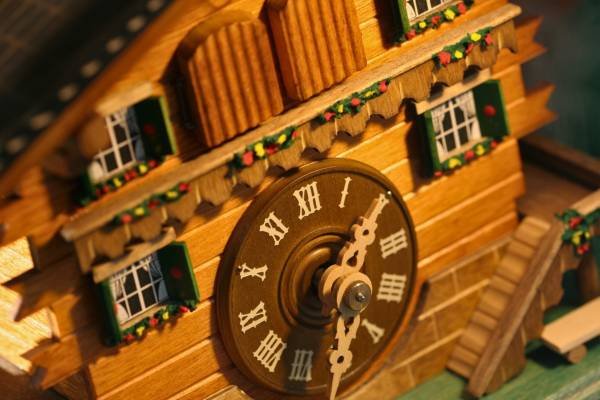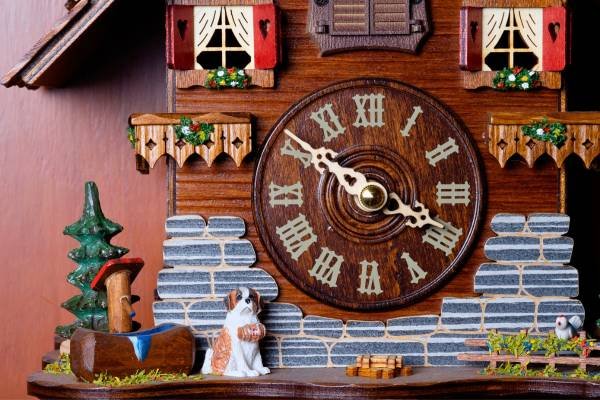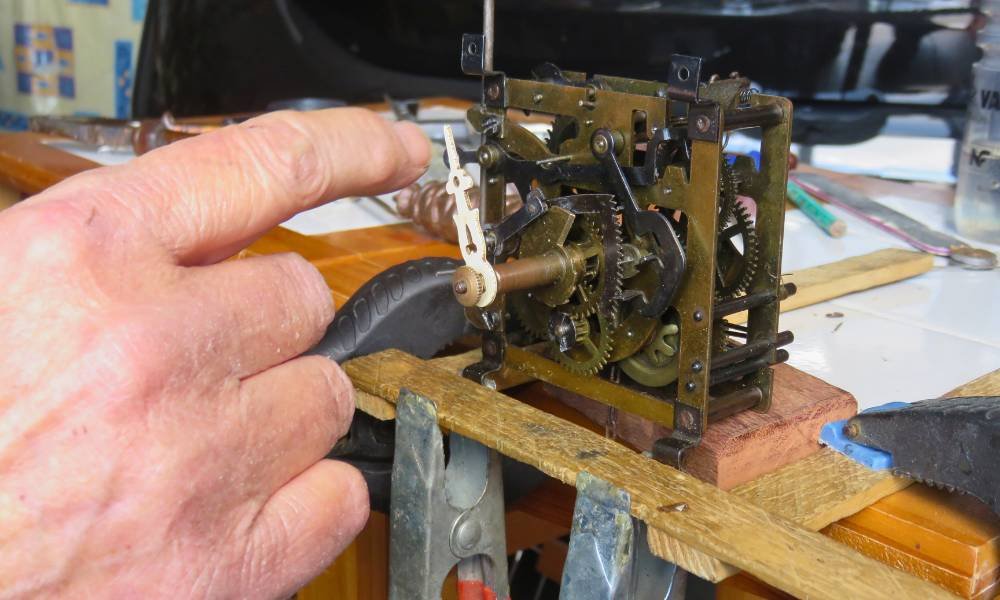A cuckoo clock is a timeless piece of art that brings charm and character to any home. However, when it stops working, it can be quite frustrating. Learning how to fix a cuckoo clock can save you time and money while preserving its intricate beauty. This comprehensive guide will walk you through the steps to diagnose and repair common issues, from non-functioning chimes to misaligned hands. Whether you’re a clock enthusiast or a DIY novice, these easy-to-follow instructions will help you restore your cuckoo clock to its former glory. Keep your cherished timepiece ticking perfectly with our expert tips and advice.
Understanding the Basics of a Cuckoo Clock

Understanding the basics of a cuckoo clock is essential for effective repairs. A cuckoo clock consists of several main components: the movement, weights, pendulum, and bellows. The movement drives the clock’s hands and powers the cuckoo call. The weights provide the necessary force to keep the watch running, while the pendulum regulates the timekeeping. The bellows create the distinctive cuckoo sound. Each component works together in harmony to ensure accurate timekeeping and charming hourly chimes. By familiarizing yourself with these parts, you can better diagnose and fix common issues, ensuring your cuckoo clock continues to delight for years to come.
Common Problems with Cuckoo Clocks
Cuckoo clocks, while charming, can experience several common problems over time. These include the watch not chiming, the pendulum not swinging, or the weights not moving. When a cuckoo watch fails to chime, it might be due to a misaligned or broken gong or an issue with the clock’s movement. If the pendulum isn’t swinging, it could be due to an obstruction, imbalance, or wear and tear on the pendulum’s components. Weights that don’t move often indicate problems with the chains, pulleys, or the clock’s internal gears. Identifying these symptoms early can help in diagnosing and fixing your cuckoo clock efficiently, ensuring it keeps perfect time.
Gathering the Necessary Tools
When fixing a cuckoo clock, having the right tools is essential. Gather a set of precision screwdrivers, pliers, and a lubricant designed for clocks. These basic tools will help you access and adjust the delicate components. Ensure you have a clean, well-lit workspace to avoid losing small parts. Before starting, unplug or remove any power sources and wear protective gloves to prevent oil and dirt from transferring to the clock’s interior. Safety goggles are also recommended to shield your eyes from debris. Following these safety precautions will help you repair your cuckoo clock efficiently and safely.
Step-by-Step Guide to Fixing a Cuckoo Clock
- Step 1: Diagnosing the problem.
- Step 2: Open the clock case carefully.
- Step 3: inspecting the movement and cleaning it.
- Step 4: Checking and adjusting the pendulum.
- Step 5: Ensure the weights are properly attached and functioning.
Repairing Specific Issues
Fixing a cuckoo clock involves addressing specific issues like a non-functioning chime, misaligned hands, and damaged bellows or cuckoo calls. Start by checking the chime mechanism for obstructions and ensuring the weights are properly aligned. For misaligned hands, gently adjust them to the correct time position without forcing them. If the bellows or cuckoo calls are damaged, carefully inspect and replace any torn or worn parts. Use the proper tools and follow the manufacturer’s guidelines to ensure precision. Regular maintenance and careful handling can prevent these common problems, keeping your cuckoo clock in perfect working order. This approach ensures your clock’s longevity and continued charm.
Lubrication and Cleaning
Regular lubrication and cleaning are crucial for maintaining a cuckoo clock’s performance and longevity. Over time, dust and grime can hinder the movement, causing inaccuracies or complete malfunctions. To lubricate, use a high-quality clock oil and apply a small amount to the pivot points and gears. Avoid over-lubricating, as excess oil can attract dust. For cleaning, carefully open the watch case and gently dust the internal components with a soft brush. Use a mild, non-abrasive cleaner for stubborn dirt, ensuring no residue remains. Regularly performing these maintenance tasks keeps your cuckoo clock running smoothly and ensures it continues to charm your home for years to come.
Reassembling the Clock
Reassembling a cuckoo clock after repairs is crucial for its proper function. Begin by carefully placing the movement back into the watch case, ensuring all gears and components are aligned. Attach the pendulum and weights, verifying they move freely. Securely fasten all screws and connectors, double-checking for any loose parts. Align the hands correctly on the watch face to ensure accurate timekeeping. Finally, test the cuckoo call and chimes to confirm everything is working seamlessly. Proper reassembly ensures your cuckoo clock runs smoothly and maintains its charming appeal, keeping it in perfect condition for years to come.
Testing and Fine-Tuning

Testing and fine-tuning your cuckoo clock after repairs is crucial for ensuring accurate timekeeping. Start by setting the watch to the correct time and observing its operation for a full 24-hour cycle. Check the cuckoo call, chimes, and hand movements to ensure everything functions correctly. To fine-tune, adjust the pendulum by moving the bob up or down to regulate the clock’s speed. Weights should hang freely without obstruction. Make small adjustments and monitor the watch’s accuracy over several days. This meticulous process will help you achieve perfect timing, ensuring your cuckoo clock remains a reliable and charming centerpiece in your home.
FAQs for “How to Fix a Cuckoo Clock”
1. What causes a cuckoo clock to stop working?
💥Common issues include misaligned hands, silent chimes, tangled chains, and pendulum or weight problems.
2. How do I diagnose my cuckoo clock’s problem?
💥Observe the clock’s behavior, listen for chime irregularities, and check the weights, pendulum, and hand alignment.
3. What tools are needed to fix a cuckoo clock?
💥You’ll need screwdrivers, pliers, watch oil, cleaning cloths, a magnifying glass, and tweezers.
4. How do I adjust the pendulum for accurate timekeeping?
💥Move the pendulum bob up to speed up the clock and down to slow it. Monitor accuracy over several days.
5. When should I seek professional help?
💥If issues persist or involve complex mechanics, consult a professional clock repair service.
Conclusion
Fixing a cuckoo clock can be a rewarding experience, allowing you to restore its charm and functionality. Understanding the mechanics and common issues is key to successful repairs. By following a systematic approach, gathering the right tools, and performing careful adjustments, you can ensure your watch runs smoothly. Regular maintenance and fine-tuning will keep it in top condition. If challenges persist, seeking professional help is advisable. Embrace the joy of bringing your timepiece back to life with this guide on how to fix a cuckoo clock, ensuring it continues to delight for years to come. Enjoy the timeless beauty and reliability of your cherished cuckoo clock.
